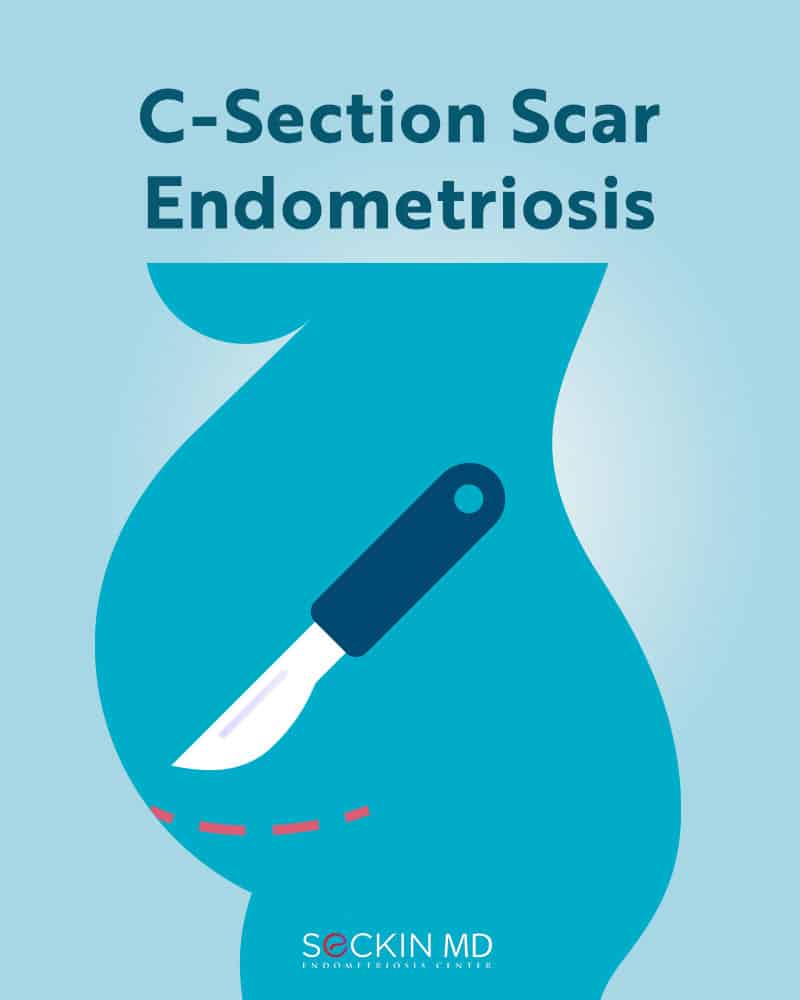
Endometriosis lesions most commonly appear in the peritoneum, and in the ovaries, bladder, and bowels. More rarely, endometriosis can also develop in the incision site of a Cesarean section (C-section). This is called C-section scar endometriosis.
C-section scar endometriosis prevalence
Due to its varying clinical presentation and overall rareness, there are currently no concrete data on the prevalence of this type of endometriosis. The literature reports an incidence of 0.03% to 0.8%.
The increasing number of C-section procedures means that there is also an increase in the prevalence of C-section scar endometriosis.
C-section scar endometriosis causes
The exact way in which a C-section can cause endometriosis is not clear. Factors, such as hormones or wound environment may contribute to the development of this type of endometriosis.
Get a Second Opinion
Our endometriosis specialists are dedicated to providing patients with expert care. Whether you have been diagnosed or are looking to find a doctor, they are ready to help.Our office is located on 872 Fifth Avenue New York, NY 10065.
You may call us at (212) 988-1444 or have your case reviewed by clicking here.
C-section scar endometriosis symptoms
As with other types of endometriosis, the most common symptom of C-section scar endometriosis is pelvic pain, which is often cyclical in nature. However, non-cyclical pain may also occur.
Another common symptom is the development of a mass or lump in or adjacent to the C-section scar. The contamination of the wound with endometrial tissue or pre-existing intraperitoneal endometriosis likely causes the development of this mass.
Symptoms may often take months or years to become apparent following a C-section.
Diagnosis
Patients often face misdiagnosis or delayed diagnosis in case of C-section scar endometriosis as with other types of endometriosis.
The most reliable method for diagnosing this type of endometriosis is excisional biopsy. Here, the surgeon takes out a sample during surgery and sends it to a specialist who analyses it to identify any endometrial cells.
Imaging techniques such as computerized tomography (CT) and magnetic resonance imaging (MRI) scan can also be used. However, these are non-specific and are useful mostly used to exclude alternative diagnoses of abdominal wall masses, such as tumors or hernias.
Treatment
The treatment and management of C-section scar endometriosis depend on several factors.
Doctors may choose medical treatments, surgery, or a combination of both. Medical treatment may involve painkillers and hormonal treatments such as combined oral contraceptives.
Surgery with wide local excision with at least 1 cm margins is the gold standard treatment. This can help prevent the recurrence and malignant transformation of the disease.
Patient story
Read Natina’s story for whom a routine C-section caused her to have stage 4 endometriosis after more than a decade and Dr. Seckin’s approach that finally healed her.
Get a Second Opinion
Our endometriosis specialists are dedicated to providing patients with expert care. Whether you have been diagnosed or are looking to find a doctor, they are ready to help.Our office is located on 872 Fifth Avenue New York, NY 10065.
You may call us at (646) 960-3080 or have your case reviewed by clicking here.